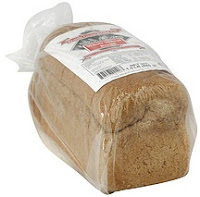 1. Whole Grains Stamp- The most helpful tool to start with would be the 100% Whole Grains Label managed by the Whole Grains Council. Here is the information from The Whole Grains Council website.
1. Whole Grains Stamp- The most helpful tool to start with would be the 100% Whole Grains Label managed by the Whole Grains Council. Here is the information from The Whole Grains Council website.Basic Stamp or 100% Stamp?
There are two different varieties of Stamp, the Basic Stamp and the 100% Stamp.
- If a product bears the 100% Stamp, then all its grain ingredients are whole grains. There is a minimum requirement of 16g (16 grams) – a full serving – of whole grain per labeled serving, for products using the 100% Stamp.
- If a product bears the Basic Stamp, it contains at least 8g (8 grams) – a half serving – of whole grain, but may also contain some refined grain. Even if a product contains large amounts of whole grain (23g, 37g, 41g, etc.), it will use the Basic Stamp if it also contains extra bran, germ, or refined flour.
2. Ingredients- My main tool is the ingredient list. I want less than 5 ingredients. Anymore, I put it right back on the shelf. These ingredients should be flour, water, yeast, possibly salt and a possibly a sweetener. 'Flour' is okay as long as it is 100% whole wheat flour. I believe this would just mean they possibly didn't grind it themselves.
3. Technique- The first ingredient I want to be is 100% WHOLE GRAIN. Stone-ground is even better. Wondering what the difference is? First, let's look at the anatomy of the grain. There are 3 parts. The Bran, the Endosperm, and the Germ. The Germ contains valuable nutrients and fats. Here's how I understand it:
 There are a few ways to grind wheat. I'm going to talk about two of the most popular. Stone grinding goes back as early as the third century B.C. It uses the whole grain, and just simply grinds it up. Because it's slower than the modern milling processes, the wheat germ is not exposed to high heat, which would cause the grain to become rancid and the vitamins to be destroyed. Stone grinding avoids this problem. It also evenly distributes the fats from the germ which causes less spoilage. So, 100% stone-ground whole wheat flour contains all 3 parts. The Bran, the Endosperm, and Germ. You get the WHOLE GRAIN.
There are a few ways to grind wheat. I'm going to talk about two of the most popular. Stone grinding goes back as early as the third century B.C. It uses the whole grain, and just simply grinds it up. Because it's slower than the modern milling processes, the wheat germ is not exposed to high heat, which would cause the grain to become rancid and the vitamins to be destroyed. Stone grinding avoids this problem. It also evenly distributes the fats from the germ which causes less spoilage. So, 100% stone-ground whole wheat flour contains all 3 parts. The Bran, the Endosperm, and Germ. You get the WHOLE GRAIN.The other way is Roller milling. This is the technique most large commercial mills use today. The bran and the germ is removed from the endosperm, they ground the bran and the endosperm separately and then are recombined. You usually don't get the germ (and the nutrients along with it).
So in summary, Stone-ground will give you the most nutrition because the Germ is included.
.jpg) 4. Sugar- The fourth thing I look for is the grams of sugar and sweetener that is used. I like to make sure it is as natural a source of sugar as possible. Honey or Raisins are two I've found that I like. The grams of sugar is important as well. Remember 4g of sugar equals 1 teaspoon. I want to keep my daily sugar to under 5 teaspoons if possible, which is 20g of sugar. If I eat a sandwich from bread that has 6g of sugar a piece, that's already 3/5 of my daily sugar allowance. So keep this in mind as well!
4. Sugar- The fourth thing I look for is the grams of sugar and sweetener that is used. I like to make sure it is as natural a source of sugar as possible. Honey or Raisins are two I've found that I like. The grams of sugar is important as well. Remember 4g of sugar equals 1 teaspoon. I want to keep my daily sugar to under 5 teaspoons if possible, which is 20g of sugar. If I eat a sandwich from bread that has 6g of sugar a piece, that's already 3/5 of my daily sugar allowance. So keep this in mind as well!5. Local- I also like my bread to be local. This is important when you're purchasing 100% stone-ground whole wheat bread. Because the germ is included in addition to there being no preservatives, it will go bad faster. The fresher the bread (meaning made this morning and limited travel) the better!
I hope this helps you pick out a great loaf of bread for your family and takes out the research for yourself. If you live in Utah County, check out my listing of products I've found to fit my Real Food Charter.
No comments:
Post a Comment
I'd love to hear your thoughts! Please be respectful.